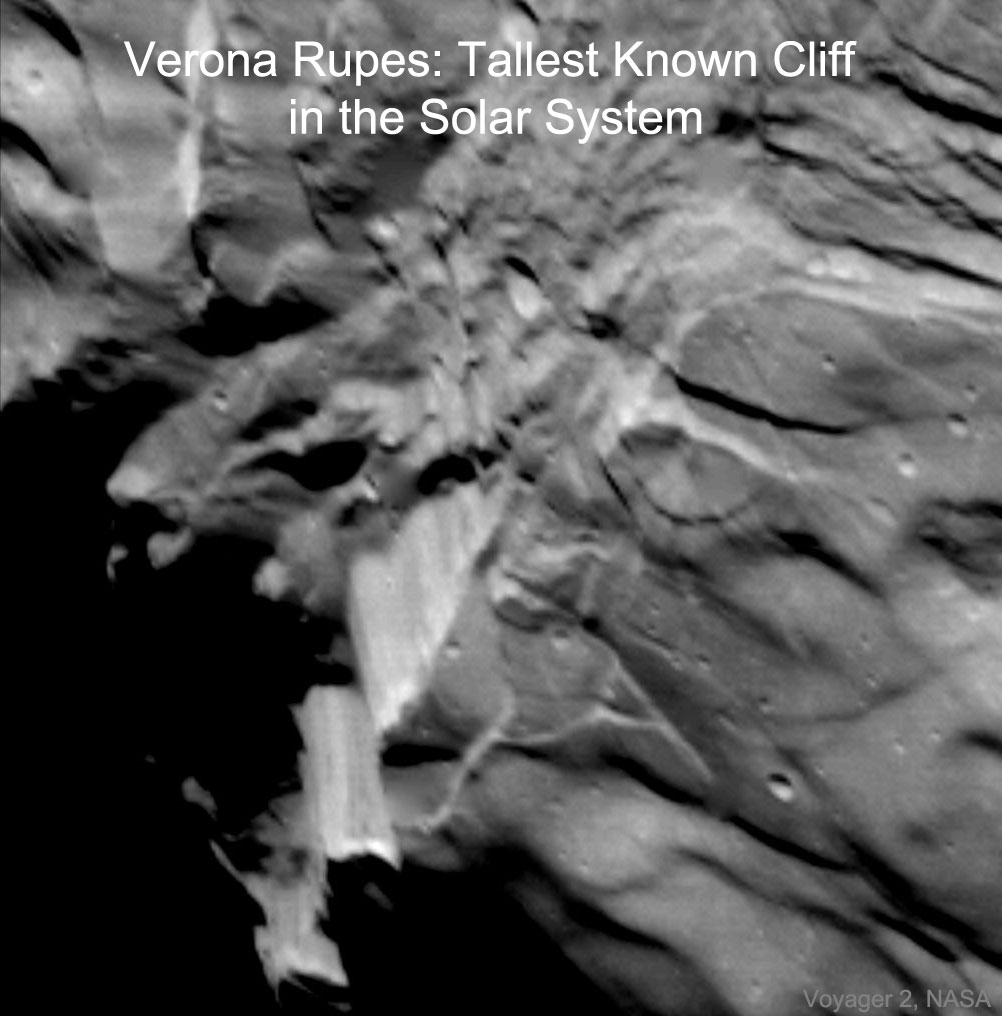2020年11月29日
Verona Rupes: Tallest Known Cliff in the Solar System
Image Credit: Voyager 2, NASA
Explanation: Could you survive a jump off the tallest cliff in the Solar System? Quite possibly. Verona Rupes on Uranus’ moon Miranda is estimated to be 20 kilometers deep — ten times the depth of the Earth’s Grand Canyon. Given Miranda’s low gravity, it would take about 12 minutes for a thrill-seeking adventurer to fall from the top, reaching the bottom at the speed of a racecar — about 200 kilometers per hour. Even so, the fall might be survivable given proper airbag protection. The featured image of Verona Rupes was captured by the passing Voyager 2 robotic spacecraft in 1986. How the giant cliff was created remains unknown, but is possibly related to a large impact or tectonic surface motion.
Tomorrow’s picture: a starless space swan
维罗纳峭壁: 太阳系现知最高耸的悬崖
影像提供: Voyager 2, NASA
说明: 从太阳系最高的悬崖一跃而下,你还能存活吗?相当有可能。天王星的天卫五,有个约20公里深、名为维罗纳峭壁的悬崖,其深度是地球大峡谷的10倍。由于天卫五的引力很小,因此寻求刺激的冒险者从崖顶一跃而下,要经过12分钟才会触底,此时的速度大约是每小时200公里,和赛车时速相当。即便如此,只要有适当的气囊保护,此种下坠可能不会致命。上面这张维罗纳峭壁为主题的影像,是由航行者二号在1986年飞越时所拍摄。目前人们还不知道这个高耸的断崖是如何形成的,但有可能是源自大撞击或是表面板块运动。 (Verona Rupes 维罗纳峭壁)
明日的图片: a starless space swan



